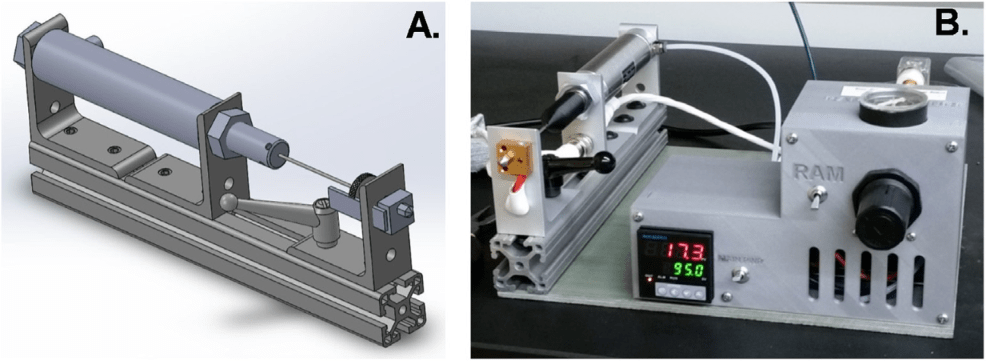Melt processing is a manufacturing technique to create plastics with different size, shape and function. It is a continuous manufacturing process which improves the manufacturing speed and decreases costs to fabricate parts. In the biology field, components made by melt processing tend to have reduced microbial contamination because of the heat and pressure used in the process, making these devices safer. That being said, academic researchers tend to avoid melt-processing techniques despite the advantages because of the high cost of equipment, large volumes of materials for pilot-scale tests and the large dead-volume of high value research materials it would require. Dr. Jonathan Pokorski and David Wirth from the University of California present a study that yielded the schematics for a low-cost, low-volume injection-molding device. They have proven the device to successfully produce PLA, PLGA and PCL polymer composites at sub-milliliter volume, which caters to the sample size used in most academic labs.
To fabricate this benchtop injection molding instrument, the team repurposed 3D printer parts and a pneumatically-driven piston to fill specially machined aluminum molds (see image above). The polymer samples were manufactured with a variety of fillers and analyzed to see the distribution of those fillers. Analyses included Energy Dispersive X-Ray Spectroscopy (EDS) and mechanical tension testing with the CellScale UniVert. Below graphs show the mechanical properties (Elongation at Break, Young’s Modulus and Ultimate Strength) of injection molded composite materials at varying injection temperature compared to literature values of pristine PLA.

To read the full article, click here: https://doi.org/10.1016/j.polymer.2019.121802
To read more about Dr. Pokorski’s research, click here: https://profiles.ucsd.edu/jonathan.pokorski
To read about the effects of cyclic and shear stretch on inflammation and tissue formation, click here.








